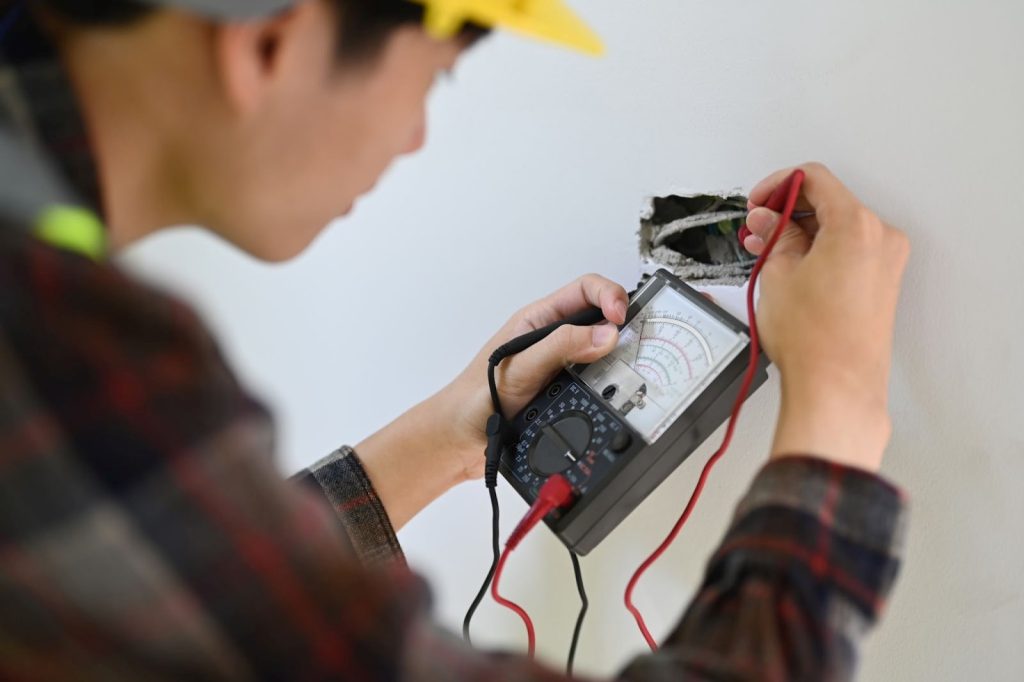Are you wondering whether or not your television needs to be PAT tested? In today’s world, it is becoming increasingly important to ensure that all of our appliances are up-to-date with the latest safety regulations. This article provides an overview of what PAT testing entails and why it may be necessary for your TV.
Does A TV Need To Be PAT Tested?
Yes, a TV needs to be PAT tested. Portable appliance testing (PAT) is a process of checking electrical appliances, such as televisions, to ensure they are safe to use. This is important for both personal safety and compliance with legal requirements.
PAT testing involves a visual inspection of the appliance and electrical testing to check for faults or damage. It is recommended that all electrical appliances, including TVs, are PAT tested at least once a year to ensure they remain safe to use.
How Much Does PAT Testing My Appliances Cost?
How Often Should A TV Be PAT Tested?
The frequency at which you should PAT test your TV will depend on its environment. If it’s used in a domestic setting then it doesn’t need to be tested as often as if it was being used commercially (every three years rather than annually). However, regular visual inspections are still necessary no matter what type of setting the appliance is used in. This ensures all plug sockets and cables remain free from damage and hazards such as overheating due to overloading.
If you’re unsure how often you should get your TV PAT tested, the best advice would be to speak with a qualified electrician who can advise you further based on your specific circumstances. Your local authority may also offer guidance on PAT testing regulations.
Do All Electrical Items Need PAT Testing?
Not all electrical items need portable appliance testing (PAT) as it depends on the type of equipment and its usage. For example, stationary equipment that is not intended to be moved does not require PAT testing. However, portable equipment such as laptops, power tools, and extension leads do require PAT testing.
Additionally, equipment used on construction sites or in harsh environments may require more frequent testing due to wear and tear. Ultimately, it is the responsibility of the employer to assess the risks and determine which equipment requires PAT testing to ensure the safety of employees.
What Will I Receive After a PAT Test?
What Devices Should Be PAT Tested?
There are two types of appliances that should be PAT tested:
- Class I appliances: Class I appliances are those that need to be earthed. These devices have a metal case and require a three-pin plug. They include items such as kettles, irons, computers, and printers. If an appliance is labeled as Class I, then it must be PAT tested.
- Class II appliances: Class II appliances are those that don’t need to be earthed. They have a two-pin plug and are double-insulated. These devices include items such as televisions, radios, and some power tools. If an appliance is labeled as Class II, then it must also be PAT tested.
Other devices that should be PAT tested:
- Appliances used by the public, such as in hotels, schools, and hospitals
- Appliances that are rented out, such as tools or audio-visual equipment
- Appliances that are frequently moved or used in harsh environments, such as construction sites
- Appliances that are repaired or serviced, as this can affect their safety
- Etc.
Can you PAT test your own equipment?
What Items Don’t Need PAT Testing?
Portable appliance testing (PAT) is an important safety measure for businesses and individuals to ensure that electrical equipment is safe to use. However, not all electrical equipment requires PAT testing. The following items don’t require PAT testing:
- Stationary equipment: Stationary equipment such as fridges, washing machines, and cookers do not require PAT testing. This is because they are not moved around and are less likely to suffer damage.
- Double-insulated equipment: Double-insulated equipment is designed to protect against electrical shock without the need for an earth connection. These devices do not require PAT testing as they do not rely on an earth connection for safety.
- Equipment powered by batteries: Battery-powered equipment such as laptops, tablets, and mobile phones do not require PAT testing as they are not connected to a main power supply.
- Low-risk equipment: Low-risk equipment is defined as equipment that has a low risk of causing harm. Examples of low-risk equipment include desk lamps and low-voltage equipment. These items do not require PAT testing, but it is still recommended to inspect them for damage or wear and tear.
- Hire equipment: If you hire equipment from a reputable company, they will have already tested and inspected the equipment before renting it out. Therefore, you do not need to carry out PAT testing on hired equipment.
- New equipment: New equipment does not require PAT testing as it should be supplied in a safe condition. However, it is still recommended to carry out basic visual checks before use.
What happens if an appliance fails a PAT test?
How To PAT Test A Television
To PAT test a television, you must first switch off and unplug the device. Check for any visible damage or hazards like frayed cables or exposed wires. Then, use a PAT tester to conduct the test. Connect the tester to the device’s plug and switch it on. The tester will check for electrical safety, insulation resistance, and earth continuity.
If the television passes the test, attach a ‘Passed’ label on the plug or cable to indicate that it has been tested and is safe to use. If the TV fails the test, it must be repaired or disposed of safely. It is recommended that PAT testing is performed regularly by professionals to ensure electrical safety and avoid potential hazards.
PAT Testing Services
PAT testing services are an important part of electrical safety and compliance with legislation. Professional PAT testers can provide you with a comprehensive examination of your appliances, checking for poor connections, earth connection issues, and cable splits which may not be obvious to the untrained eye. If any faults or issues are detected during this process then the service engineer will make sure that the current requirements are met before they leave your premises.


